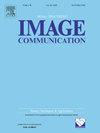梯度启发的注意力驱动去噪网络
IF 2.7
3区 工程技术
Q2 ENGINEERING, ELECTRICAL & ELECTRONIC
引用次数: 0
摘要
通常在采集过程中引入的图像噪声会显著降低视觉质量,并对下游图像处理任务产生不利影响。为了解决这一挑战,同时保留精细的结构细节,我们提出了GIADNet:一个梯度启发的注意力驱动去噪网络。该框架集成了梯度引导的特征增强、多尺度表示学习和基于注意的细化,在噪声抑制和细节保留之间取得了良好的平衡。特别是,在管道的早期将噪声输入的梯度信息与深度特征融合,以丰富语义表示。此外,我们引入了两个专用模块:多池像素注意力(MPPA)模块,它自适应地强调信息像素,以及多尺度注意力块(MSAB),旨在捕捉不同空间分辨率下的分层上下文依赖关系。在标准基准上进行的大量实验表明,GIADNet实现了极具竞争力的性能,在定量指标和视觉质量方面都超过了几种最先进的方法。消融研究进一步验证了每个组件的有效性,强调了我们的注意力引导多尺度设计在推进图像去噪领域的重要性。代码可从https://github.com/debashis15/GIADNet获得。本文章由计算机程序翻译,如有差异,请以英文原文为准。
GIADNet: Gradient Inspired Attention Driven Denoising Network
Image noise, commonly introduced during the acquisition process, significantly degrades visual quality and adversely affects downstream image processing tasks. To address this challenge while preserving fine structural details, we propose GIADNet: a Gradient-Inspired Attention-Driven Denoising Network. The proposed framework integrates gradient-guided feature enhancement, multi-scale representation learning, and attention-based refinement to achieve a superior balance between noise suppression and detail retention. In particular, the gradient information of the noisy input is fused with deep features early in the pipeline to enrich semantic representation. Furthermore, we introduce two dedicated modules: the Multi-Pooling Pixel Attention (MPPA) module, which adaptively emphasizes informative pixels, and the Multi-Scale Attention Block (MSAB), designed to capture hierarchical contextual dependencies across varying spatial resolutions. Extensive experiments on standard benchmarks demonstrate that GIADNet achieves highly competitive performance, surpassing several state-of-the-art methods in both quantitative metrics and visual quality. Ablation studies further validate the effectiveness of each component, underscoring the importance of our attention-guided multi-scale design in advancing the field of image denoising. Code is available at: https://github.com/debashis15/GIADNet.
求助全文
通过发布文献求助,成功后即可免费获取论文全文。
去求助
来源期刊

Signal Processing-Image Communication
工程技术-工程:电子与电气
CiteScore
8.40
自引率
2.90%
发文量
138
审稿时长
5.2 months
期刊介绍:
Signal Processing: Image Communication is an international journal for the development of the theory and practice of image communication. Its primary objectives are the following:
To present a forum for the advancement of theory and practice of image communication.
To stimulate cross-fertilization between areas similar in nature which have traditionally been separated, for example, various aspects of visual communications and information systems.
To contribute to a rapid information exchange between the industrial and academic environments.
The editorial policy and the technical content of the journal are the responsibility of the Editor-in-Chief, the Area Editors and the Advisory Editors. The Journal is self-supporting from subscription income and contains a minimum amount of advertisements. Advertisements are subject to the prior approval of the Editor-in-Chief. The journal welcomes contributions from every country in the world.
Signal Processing: Image Communication publishes articles relating to aspects of the design, implementation and use of image communication systems. The journal features original research work, tutorial and review articles, and accounts of practical developments.
Subjects of interest include image/video coding, 3D video representations and compression, 3D graphics and animation compression, HDTV and 3DTV systems, video adaptation, video over IP, peer-to-peer video networking, interactive visual communication, multi-user video conferencing, wireless video broadcasting and communication, visual surveillance, 2D and 3D image/video quality measures, pre/post processing, video restoration and super-resolution, multi-camera video analysis, motion analysis, content-based image/video indexing and retrieval, face and gesture processing, video synthesis, 2D and 3D image/video acquisition and display technologies, architectures for image/video processing and communication.
 求助内容:
求助内容: 应助结果提醒方式:
应助结果提醒方式:


